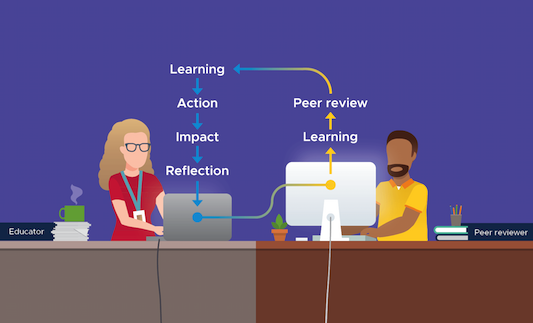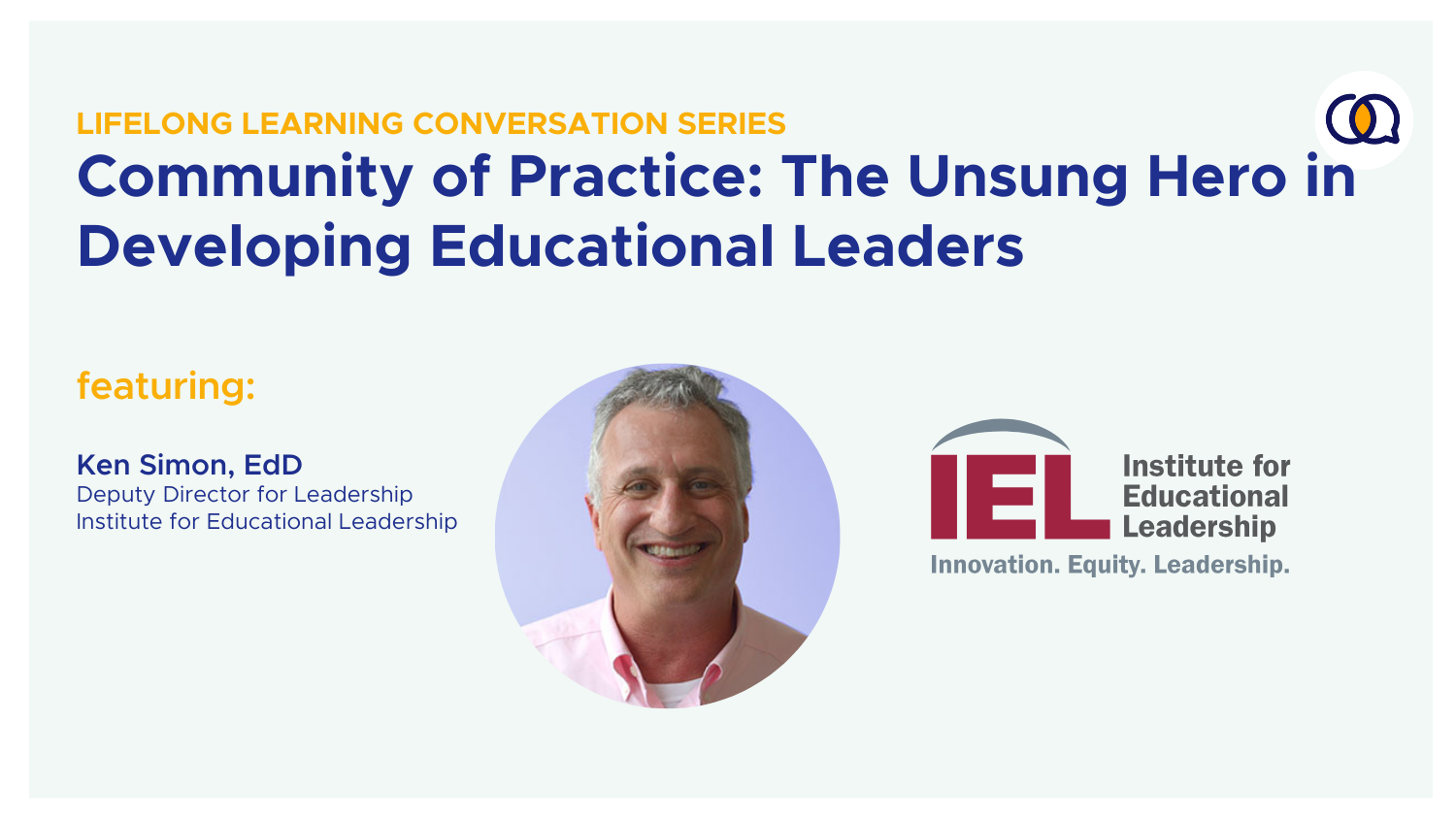Preparing professionals for a rapidly changing workforce
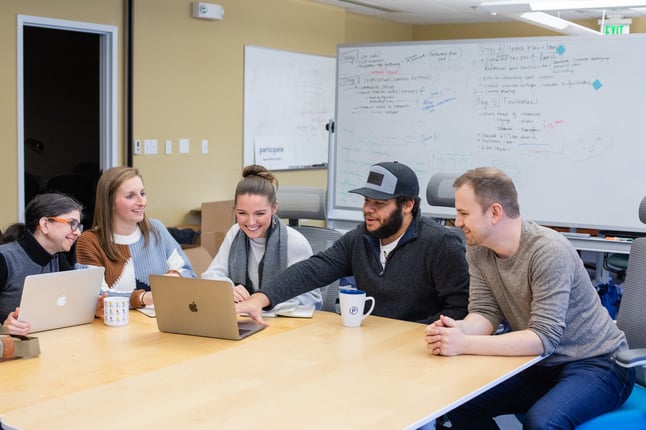
For the past 25 years, I’ve had the pleasure and unique challenge of working with teachers as a researcher and educator in multiple learning contexts. Most recently, I’ve been afforded the opportunity to share what I’ve learned at the CloseIt Summit, Connected Learning Summit and Future of Work event co-sponsored by Getting Smart and the Graduate School of Education at the University of Pennsylvania.
At these gatherings, I’ve met innovative organizations dedicated to rethinking adult education and workforce development. The current focus on adult learning, prompted by the tremendous need for effective workforce training, has led me to reflect on my work with teachers and how the same learning models can be effective for all adult learners.
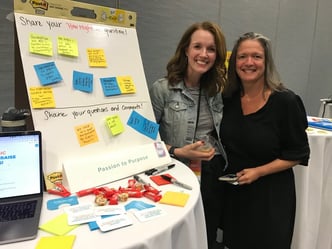 .
. 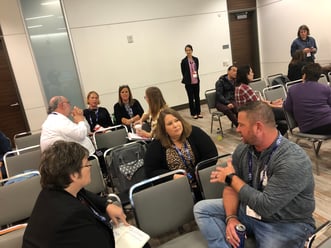
Research on effective professional development (PD) for K-12 teachers in the U.S. has long called for more relevant, job-embedded and blended learning opportunities. Although slow, personalized learning design is finally making its way to PD.
Teachers—as a group—qualify as a unique learning persona. They are responsible for the learning of others, yet their learning needs are often overlooked given the demanding environments in which they work. When I started my career working in education technology research, teachers were (and still are) challenged by the following:
- Isolation.
- Lack of personalized training.
- Lack of time.
- Lack of resources.
- Obstacles to learning while teaching in the classroom.
- Adult learning needs not addressed in traditional sit-and-get PD.
A shift in professional learning
In 2009, I was helping develop online courses on what would become the Participate platform and quickly began to see what we should have predicted; educators needed more tools for collaboration and connection. In addition, online courses alone did not align with Participate’s core pedagogical framework grounded in inquiry and social learning models.
While teachers found value in earlier iterations of our online courses, the courses still followed a didactic, transmissive design rather than the collaborative and authentic learning approach teachers—and all adult learners—need.
Because of this necessary shift, we transitioned from Learning Management System (LMS) online modules to a Community of Practice (CoP) approach. This allowed us to build collaborative and social tools that encourage educators to connect with one another, experts and content areas of their choice.

The need for corporate retraining and learning
Similar to schools, organizations are looking into training and retraining employees to keep up with the demand for new skills and competencies. Forbes reported that as many as a third of American workers will need to switch occupations by 2030 because of rapid automation.
“This talent mismatch isn’t just bad for individuals, it’s a challenge to businesses’ continued productivity and growth. That makes investments that help workers build new skills, and chart a course toward economic mobility, not only mission-aligned—but a business imperative.”
Put simply, organizations must create a strategy for professional learning or their workforce’s relevancy is at stake.
Some organizations, such as the Los Alamos National Lab, are providing opportunities for employees to relearn competencies based on new demands of the economy, changing technologies and new directions in research and development. Los Alamos is designing workforce development opportunities so that employees can learn relevant skills and change career tracks within the organization, rather than the organization searching for outside talent.
Whether you’re a classroom teacher or software engineer, new technologies, diverse workplaces and challenging economic, social and political environments require constant learning of new skills and tools. Organizations must understand adult learning theory then build and scale learning opportunities to meet the demand of job-embedded and collaborative learning.
Experimenting with learning in organizations
In a recent article, Josh Bersin, a corporate talent analyst, outlines the history of corporate training throughout the past two decades and identifies a recent trend in “Academies.” He defines these academies as,
“An Academy is not a bunch of courses, it’s a place to go. A place to learn. A place to share. A place for experts to contribute. And a place to advance the state of knowledge. And it may be a virtual and physical space.”
Academies focus on the business competencies an organization needs to thrive. This is particularly critical because workforce development has to stop training on conservative skills and shift to training on new “broad social and behavioral skills–things we consider far more complex, soft and experiential.”
When reading this article, it struck me that the Academy structure mirrors our own transition from a focus on online module PD to a fully integrated CoP model based on learner personas and community design best practices. As Sean Michael Morris, learning design and pedagogy author and speaker, eloquently writes in After Babel: Designing for Community,
“A design for community would necessarily need to be more than personalized learning, or universal design for learning, or any of the other content-first design strategies. Access, inclusion, design all have to fall together in favor of community, of dialogue, with content being no more than the field upon which those play.”
At Participate, we’re working toward building robust CoPs that support all adult learners to collaborate, learn, design, experiment and reflect. As we continue to explore adult learning, we are continually growing as a learning organization to meet changing societal demands. We look to collaborate with all stakeholders for cross-sector collaboration, from teachers to higher educators, community college innovators, chief learning officers, nonprofit organizers and more. Working together is the only way to ensure that the future of workforce development will be responsive, innovative and sustainable in a rapidly changing world.

